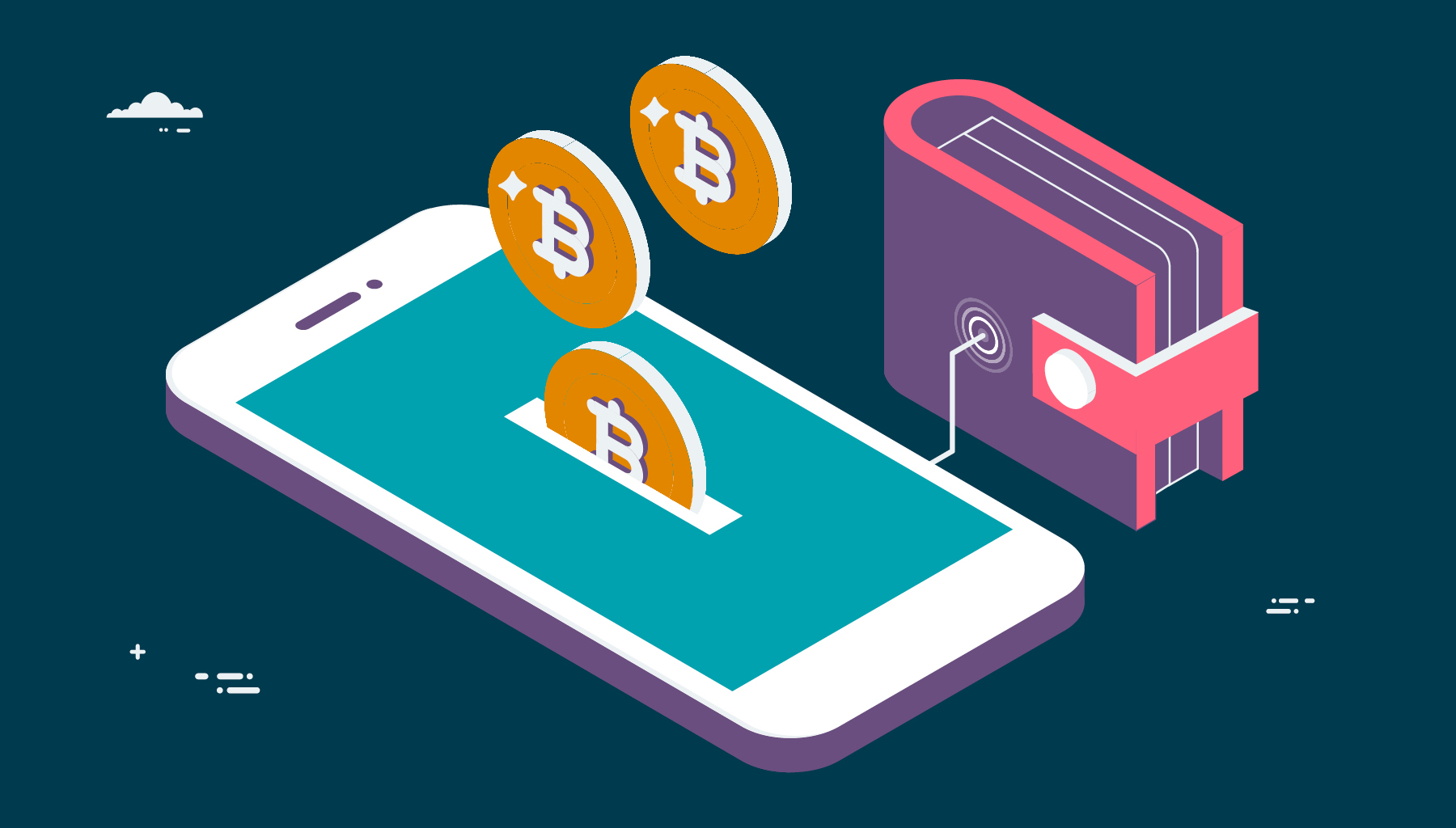While the pandemic depressed many sectors of the economy, there was one area that was ablaze with activity: cryptocurrencies. Whether it was people hoping to get rich off cryptocurrency trading, speculative investments in digital objects, technical curiosity or even social experimentation (micropayment or finance in the private sector for instance), crypto was undoubtedly hot. And yet, questions remain over whether such use cases amount to substantial proof of real value.
We argue that the real story about cryptocurrency is the origins of two kinds of cryptocurrency: private entity/ company-originated and public institution-originated. Private cryptocurrencies are currently trending towards technology such as Bitcoin and Ethereum, which can be invented, minted and distributed by private companies, big or small. Public digital currencies, specifically Central Bank Digital Currencies (CBDC) are under the purview and control of sovereign governments; in particular their treasury and currency reserve system.
So what does this mean for the enterprise? Will there be advantages in being able to make and receive payments in one or the other or both? What parts of these systems are owned by who and which systems deserve your trust? Finally, how will it work to engage in private crypto or public CBDC? These are key questions we aim to tackle here.
Cryptocurrencies: here to stay?
Since the pandemic, cryptocurrencies have been on a rollercoaster. And there are many sector watchers that believe cryptocurrencies are fundamentally speculative — doomed to ‘bubble’ and ‘burst’ cycles until they eventually become a footnote in history.
But, regardless of their long-term viability, cryptocurrencies have kickstarted a new wave of digital disruption in the global economy, markets and industries. They have bombastically started a global movement to establish themselves as viable — if imperfect and polarizing — mechanisms for transfers of value for multiple constituencies; for instance, potentially the unbanked, retail consumers, business-to-business activity and even some forms of governmental activity. Moreover, cryptocurrencies and the underlying blockchain technology were indeed intended as an alternative form of value transfer to the traditional banking systems and through decentralization, a stable system would develop that would disintermediate away the fees, interference, and controls of state treasuries and legislatures.
And to the extent that prior investment can act as any guide to the future, enough money has been plowed into crypto technologies over the past few years to suggest that they will live on in some form or the other. So while the idea that cryptocurrencies will primarily be useful for asset appreciation has taken a hammering, it may bring about an era of cryptocurrencies that are not built for appreciation (proof-of-work), but for actual value transfer, as in proof-of-stake alternatives.
None of which is to say that the crypto-naysayers are wrong. Price fluctuations and booms and busts have created uncertainty about many existing cryptocurrencies. Crypto’s bull run — that stretched from Bitcoin’s founding in 2009 to the start of the pandemic — is now firmly in the rearview mirror. Previous naysayers have cautiously flipped: BlackRock’s Chairman and CEO was not positive on Bitcoin in 2017 but will now allow one exchange to connect to its technology platform. Not a ringing endorsement, but it is at least providing crypto access to its institutional clients. The finance world is used to hedging and that seems to be the emergent, pragmatic argument.
But it may yet be that the future of cryptocurrencies isn’t Bitcoin or Ethereum. Already multiple alternatives are being designed, offered and operated — many claiming to offer greater stability and throughput.
The Solana and Near protocols are examples of this. Solana is often quoted as a solution to crypto’s scalability problem (blockchain networks can only handle a paltry amount of transaction data compared to credit card networks), with no limit to the amount of coin it will mint. Another solution example is the futuristic version of a blockchain using a Directed Acyclic Graph (DAG) that might be the answer to high throughput, low computational costs and stable value. This is all still, however, bleeding edge technology — Solana had 12 full outages in the few months it's been live.

Elsewhere, so-called ‘stablecoins’ offer another tantalizing approach to cryptocurrencies. Here, they aim to match the fluctuating value of a reserve currency, such as the U.S. dollar. There are two basic approaches these coins use to match the reserve currency’s value. One is through a combination of software and market incentives as the now failed TerraUSD stablecoin tried. The other is for the coin’s reserve pool to be backed by high-quality assets such as cash. TerraUSD failed by being backed essentially by loans. Currently the U.S. Congress is working on marking up a Stablecoin Bill to regulate and protect assets such as stablecoins.
Whatever the case may be, cryptocurrencies are a current tool for value transfers between customers and businesses, individuals to individuals, and individuals to states. As yet digital currencies issued by sovereigns are not widely available as a substitute.
State-run cryptocurrencies
We all know what money is, at least we thought we did. In the past, banks issued notes that promised to pay the bearer a certain amount of something ‘valuable’ such as gold. So the note was a proxy for the thing of real value, or if you prefer, a token. As it happens, the concept — that gold reserves were needed to back up the amount of money that was printed — was ditched in the 1970s when the so-called gold standard was dropped. Today, a central bank prints or withdraws money or legal tender. As computer systems became pervasive, we developed a digital representation of those bank tokens. Numbers moved around payment systems but physical cash didn’t always move. It’s up to the retail banks to have enough funds in place, backed up by the central banks to facilitate the drawdown of cash if it’s required. But mostly, today’s world is more about digital exchange of currencies.
Central bank digital currency (CBDC) refers to a form of digital money or monetary value, denominated in the national unit of account, that is a direct liability of the central bank. Or in other words, a state-run cryptocurrency.
We’ve already seen China developing its digital Yuan in response to the rapid growth of financial technology companies during the 2010s. Likewise, the U.S. started developing its digital dollar in response to Facebook's digital currency Libra — a project unveiled in 2019 but which has been prevented by the U.S. Government from ever actually getting off the ground.
Even so, the U.S. federal reserve bank is pressing ahead with CBDCs. As outlined in a 2022 U.S. Presidential Executive Order, the U.S. intends to provide leadership in regulatory policy guidance for the domestic and international use of CBDCs and in multicountry conversations and pilot projects involving CBDCs.
The Federal Reserve Bank has outlined the guardrails it would put in place for any future dollar payment system. These include privacy protections and the need for interoperability with other global systems. The President expects a report on the policy — its legal, technical and operational aspects to facilitate and support the introduction of a CBDC system — to land on his desk by the end of 2022.
That report will also detail the conditions that are expected to drive mass adoption of different types of digital assets — along with the risks and opportunities such growth might present to U.S. consumers, investors and businesses. There may also be a technical evaluation of the infrastructure, capacity and expertise needed at relevant agencies to facilitate and support the introduction of a CBDC system.
One critical aspect that seems to be predetermined, at least by the U.S. Federal Reserve system, is that a potential CBDC should be intermediated. The Federal Reserve doesn’t intend to provide bank accounts for individuals — and is prohibited from doing so by the Federal Reserve Act. Instead, it foresees private sector partners offering accounts or digital wallets to facilitate the management of CBDC holdings and payments. Such a model could use the private sector’s existing privacy and identity-management frameworks. And a pilot project — called the Digital Currency Initiative — is already being developed through M.I.T and the Boston Fed.
Since a CBDC is a type of central bank liability — similar to the U.S. dollar — issued in digital form, it will have the full backing of a central bank, even though it could be managed by designated private financial institutions.
A comparison of paper, crypto and Central Bank digital currencies
The table below compares different types of currencies and illustrates what they enable and allow, and what they don't.
| Paper currency | Cryptocurrency | Central Bank Digital Currencies (CBDC) | ||
| Privacy and oversight | Transactions are private but subject to government scrutiny. Existing KYC, AML, anti-terrorism laws will apply. Certain types of business will need to ensure they follow these rules. |
Usually pseudonymous, with transactions for particular wallet addresses visible on the public blockchain. Traceable, and de-anonyizable if a user interacts with their wallet address through (say) an exchange that follows KYC (Know Your Customer). |
Transactions are private but subject to government scrutiny. Existing KYC, AML, anti-terrorism laws will apply. Certain types of business will need to ensure they follow these rules. |
|
| Regulation | Issued and regulated by a nation’s monetary authority or central bank, creating an obligation for the bank. |
Decentralized and regulated by consensus, with network participants voting on updates to the rules over time. |
Issued and regulated by a nation’s monetary authority or central bank, creating an obligation for the bank. |
|
| Settlement | Settlement occurs between 1 and 3 days after the transaction, but only during “settlement hours.” Rollback possible within a certain time limit, usually up to 30 days. |
Transactions settle as soon as the blockchain accepts a new block, usually within minutes. Transactions cannot be rolled back. |
Transactions settle quickly, usually within seconds. Roll-back or correction of transactions is possible within a certain time limit. |
|
| Valuation | Value based on the country’s fiat currency value, generally more stable. |
Value based on consensus, varies over time, often highly volatile. |
Value based on the country’s fiat currency value, generally more stable. |
|
| Monetary policy | Intended to allow a central bank to implement monetary policy providing stability and inflation control. |
Generally designed to avoid inflation, but seems to fail dramatically in either direction. |
Intended to allow a central bank to implement monetary policy providing stability and inflation control. |
|
| Payment mechanism | Transfer payments are physical or digital, with digital settlement of digital transfers.
|
Transfer payments are 100% digital. |
Transfer payments are 100% digital. |
|
You can see the advantages and disadvantages of CBDC. They basically operate the same as paper currency, but with the advantages of being purely digital. Crypto operates differently. In particular, the value of a cryptocurrency can be quite volatile, pseudonymous transactions avoid traditional oversight, and transactions are permanent — they cannot be rolled back if there is a mistake. With traditional banking, customers can often ‘undo’ a transaction that was made in error, for example making a payment to the wrong recipient or bank account, although from an accounting ledger point of view, both the error and reversal transactions are both logged. Possibly the worst problem with cryptocurrencies is the potential of forgetting your password or being tricked into giving it to a scammer — if you lose access to your wallet, or accidentally let someone in and they steal your crypto, you’ve lost it forever. There is virtually no undo and no recourse.
Trust in cryptocurrencies
One main upside, among the many upsides of well-designed CBDCs, according to economist Ethan Harris and currency strategist Athanasios Vamvakidisthere, is their almost instantaneous transactions at minimal costs, no matter where one is in the world.
The pandemic highlighted this need when U.S. stimulus payments went out to the bank accounts of millions of struggling citizens. A transfer via check would have been too slow, while one via credit card would have been too costly. But what if you didn’t have a bank account? Around 5% of American households don’t have bank accounts and roughly 21% don’t have credit or charge cards. Additionally digital wallets require upwardly mobile devices such as smartphones, but roughly 15% of the adult population in the U.S. don’t own a smartphone.
There is also the matter of trust — something of an Achilles Heel for private cryptocurrencies. Trust in the CDBC system can be viewed through the lens of ‘custody’. There are differences in custody between cryptocurrencies and CBDCs. Custody is just a fancy term for the holding of one's money or assets. Cryptocurrencies have the option of self-custody. You can keep your coins and tokens in a digital wallet entirely controlled by you because personal information isn't required to create a cryptocurrency wallet. In fact many of the recent and ongoing cryptocurrency exchange failures that are destroying customer wealth is due to these custody issues.
Self-custody is a foreign concept for CBDCs. Central banks will keep all your CBDC holdings at the central bank, and it will ultimately decide what you can or can't do with your digital cash. In terms of privacy, one of the Bank for International Settlements CBDC reports sums it up, “full anonymity with CBDCs is not possible because the central bank needs to be able to track everything to a tee.” Therefore, to impose this sort of control, you will have to complete a KYC in order to use a CBDC. According to the World Economic Forum's CBDC and stablecoin report, central banks will assign your digital identity a credit score which will determine what you can and can't do with the money.
The central bank designs and regulates a CBDC, and banks will have a goal of low-friction adoption of the digital currency. As such, we expect users of a CBDC — whether a business or an individual — won’t worry about concepts such as monetary control, proof of work or network consensus. The central bank will assure those things are taken care of in its implementation and everyone else can just use the currency similarly to how they use currency today.
Businesses are exploring which cryptocurrencies can work for them
Today, half of retailers profits are eaten up in transaction processing fees, usually from credit card companies. A CBDC might allow more streamlined processing, cutting out those intermediaries and reducing these costs. Alternatively, the threat of disintermediation may force credit card companies to reduce their merchant fees, even if they aren’t forced out entirely. On the other hand, governments introducing a digital currency are quite concerned about the possible effects on the existing ecosystem of banks and payment providers, so there may be little disruption in the B2C space overall.
If we think about B2B processes and payments, there could be a larger impact. Payments using CBDCs are fast, available 24/7, and settle immediately. This reduces or eliminates the need for reconciliation activities. A CBDC based on a distributed ledger could take advantage of smart contracts, encapsulating a complex, atomic transfer of multiple assets, potentially in multiple currencies. All of this could reduce risk and streamline business to business transactions.
For businesses, transacting with crypto will entail a degree of risk. You could wake up tomorrow and find your cryptocurrency holdings have halved in value. This makes cryptocurrency exchange an immediate concern and you should be sure your financial IT system fulfills and invokes currency exchange in these transactions as fast as possible.
We’re already seeing a number of companies trialing crypto payments. For instance, Gucci, owned by Kering SA, has said it will start accepting 10 cryptocurrencies including Bitcoin, Bitcoin Cash, Ether, Dogecoin and Shiba Inu. Regardless of the debate in technical and financial communities, the fact that major retailers are accepting cryptocurrency suggests they’ve seen some demand from their customers. It would be a brave business leader — especially those catering to younger demographics — to ignore new payment technologies entirely.
Even so, many organizations that today claim to “accept crypto” as payment simply use a third party to facilitate the transaction and quickly swap the cryptocurrency for fiat currency, to minimize the risk.

Regardless of the debate in technical and financial communities, the fact that major retailers are accepting cryptocurrency suggests they’ve seen some demand from their customers. It would be a brave business leader — especially those catering to younger demographics — to ignore new payment technologies entirely.
Regardless of the debate in technical and financial communities, the fact that major retailers are accepting cryptocurrency suggests they’ve seen some demand from their customers. It would be a brave business leader — especially those catering to younger demographics — to ignore new payment technologies entirely.
Can your infrastructure support crypto?
Any company that is exploring the possibility of supporting cryptocurrency transactions needs to evaluate how its current IT systems can support that change.
In terms of business-to-consumer transactions with a hypothetical CBDC, we expect that issuing governments will try to make it as seamless as possible for companies to move to the new currency. It’s likely that an existing payment gateway — a system that that today accepts and verifies credit card transactions — would be updated to support a CBDC. If the payment gateway is provided by a third party, that vendor might even update it, requiring almost no work on the part of the organization using it. It’s possible that payment gateways could also be used to accept cryptocurrency payments, too, although volatility in these currencies likely means that a ‘crypto’ transaction would actually be exchanged fairly quickly and settled in traditional fiat currency.
Business-to-business transactions for CBDCs and cryptocurrencies are likely to be more involved, although possibly still streamlined compared to today’s system of wire transfers.
If cryptocurrencies reach mainstream adoption — for instance, as the number of large financial institutions that support them increases — businesses will need to ensure their payment and accounting systems can accommodate this. Similarly as CDBCs come to fruition, B2B transactions on business networks will begin to use the new currencies, either to and from the network (e.g. SWIFT) or within the network as an efficiency gain.
SWIFT in particular has already started to experiment with the necessary transactions and will use the new ISO 20022 standard. SWIFT and Capgemini are testing how SWIFT can interlink CBDC platforms with existing payments systems via the SWIFT platform — and regardless of the technology used for the CBDC. They’re also working on an interlinking solution to make CBDC networks ‘cross-border payments ready.’ Other work underway includes building and demonstrating the ability to deploy a gateway on a domestic CBDC network. According to the two companies: “The gateway will intercept cross-border transactions on the network, translate them, and send them to the SWIFT platform for onward transmission to another CBDC network or established payment system. This collaborative proof of concept addresses the interlinking of different CBDCs. It also reuses existing bank messaging standards and authentication models, including ISO 20022 and SWIFT’s Private Key Infrastructure.” They intend to provide this solution to support the more than 11,000 financial institutions in over 200 countries that use SWIFT.
Cryptocurrency currently depends on blockchain technology as its implementation architecture. We’ve helped clients use blockchain architecture for financial transactions and supply chain processes. We’ve seen many enterprises move towards an evolutionary approach to systems architecture, which enables them to exploit such opportunities because their systems are designed to change.
In order to ensure your payment gateways accept all future digital payments and coinage, platform architecture is an important requirement to focus engineering efforts in an increasingly changing digital world.
We think it’s still too early to predict exactly how cryptocurrencies and CBDCs will play out from an enterprise perspective. We’ve mapped out some of the potential scenarios in this piece — but its a fast changing sphere. And that’s why we think being prepared for change is the safest strategy going forward.


















